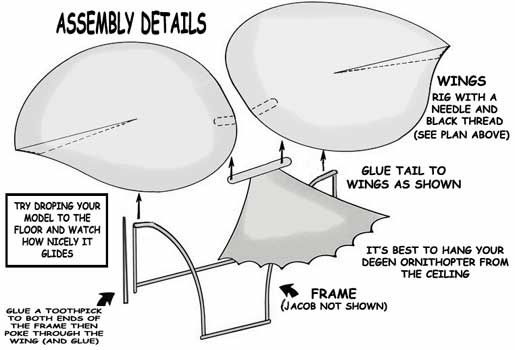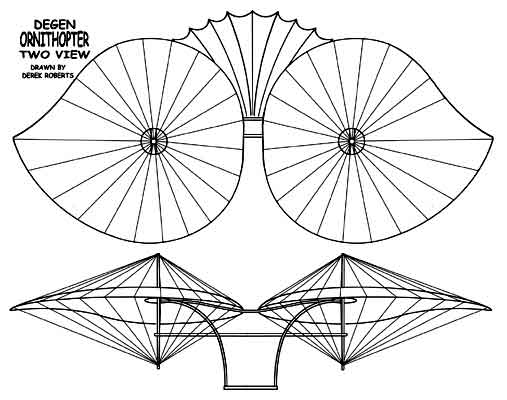

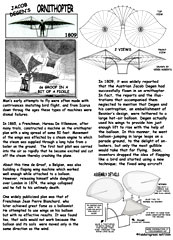
Jacob Degen and his 1809 Ornithopter
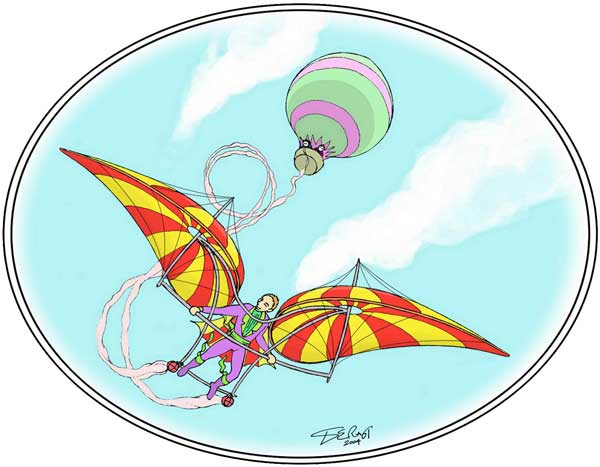
This original artwork by Derek Roberts is available in much higher quality (suitable for framing), on the Full Collection DVD.
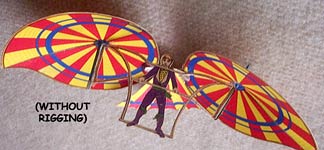
Even after the balloon was created, numerous efforts to imitate the flight of birds were made with experiments involving human muscle powered paddles or flappers, but none proved successful. Jacob Degen carried out various experiments to imitate the flight of birds from 1806 to 1813.
In 1809, Degen claimed he had successfully flown in an ornithopter. However, this was not strictly true as his machine was tethered to a large hot-air balloon.
Degen actually used his wings to provide him just enough lift to rise with the help of the balloon. In this manner, he went balloon-jumping in large leaps on a parade ground, to the delight of onlookers, but only the most gullible would take that for flying. He repeated this performance several times in Paris and Vienna between 1806 to 1817. Soon, inventors dropped the idea of flapping like a bird and started using a new technique; the fixed wing aircraft.
Jacob Degen 1809 Ornithopter
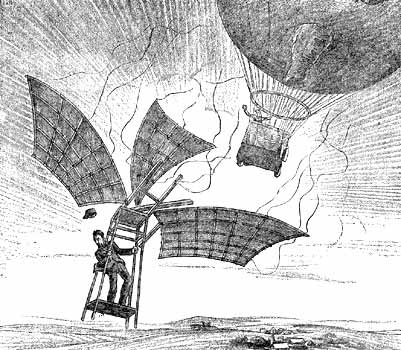
As the dream of flight was moving toward reality during the nineteenth century, developments begun centuries earlier came to a climax. New findings about bird flight, new engineering techniques, and designs were keeping the possibility of human-powered winged flight alive.
Man's early attempts to fly were often made with contrivances
imitating bird flight, and from Icarus down through the ages these
types of machines were dismal failures.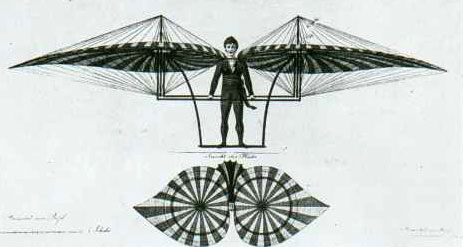
In 1865, a Frenchman, Hureau De Villeneuve, after many trails, constructed a machine on the ornithopter plan with a wing spread of some 50 feet. Movement of the wings was effected by a steam engine to which the steam was supplied through a long tube from a boiler on the ground. The first test pilot was carried into the air so rapidly that he became excited and cut off the steam-crashing the plane.
About this time de Groof, a Belgian, was also building a flapping wing machine which worked well enough while attached to a balloon. However, releasing himself while dangling over London in 1874, the wings collapsed and he fell to his untimely death.
One widely publicized plan was that of Frenchman Jean Pierre Blanchard, who later achieved great fame as a balloonist. He attempted to use wings on his balloon but with no effective results. It was found too, that sails would not work because the balloon and its sails were moved only in the same direction as the wind.
In 1809, it was widely reported that the Austrian Jacob Degen had successfully flown in an ornithopter. In fact, the reports and the illustrations that accompanied them neglected to mention that Degen and his contraption, an embellishment of Besnier's design, were tethered to a large hot-air balloon. Degen actually used his wings to provide him just enough lift to rise with the help of the balloon. In this manner, he went balloon-jumping in large leaps on a parade ground, to the delight of onlookers, but only the most gullible would take that for flying. Soon, inventors dropped the idea of flapping like a bird and started using a new technique; the fixed wing aircraft.
Still, Degen had made a contribution: unlike Blanchard and others, his design was actually built and offered some approximation of flight. It also spurred public interest in flight-Degen performed his "act" before appreciative crowds in Paris and Vienna sporadically from 1806 to 1817. Most importantly, however, reports of Degen's "flight" prompted Sir George Cayley to publish in 1809 the first of his monumental three-part treatise, On Aerial Navigation, a landmark in the history of flight.
